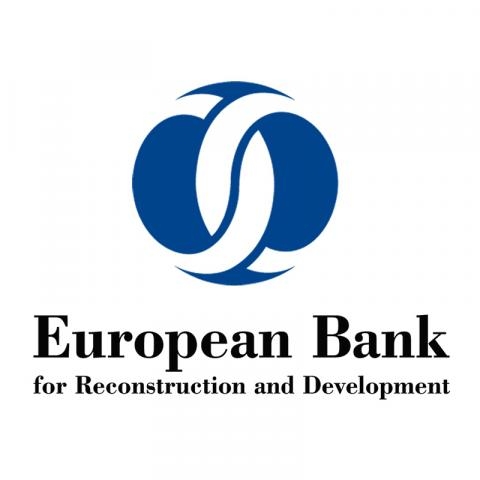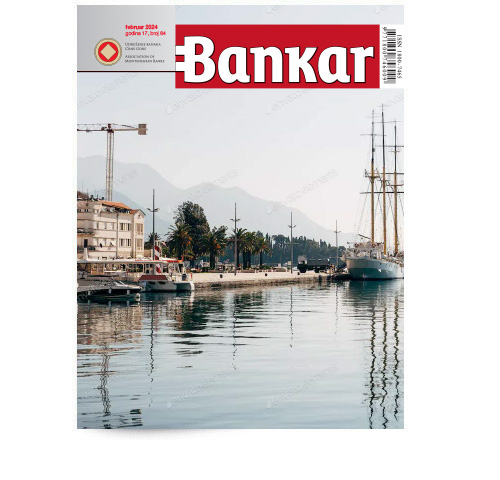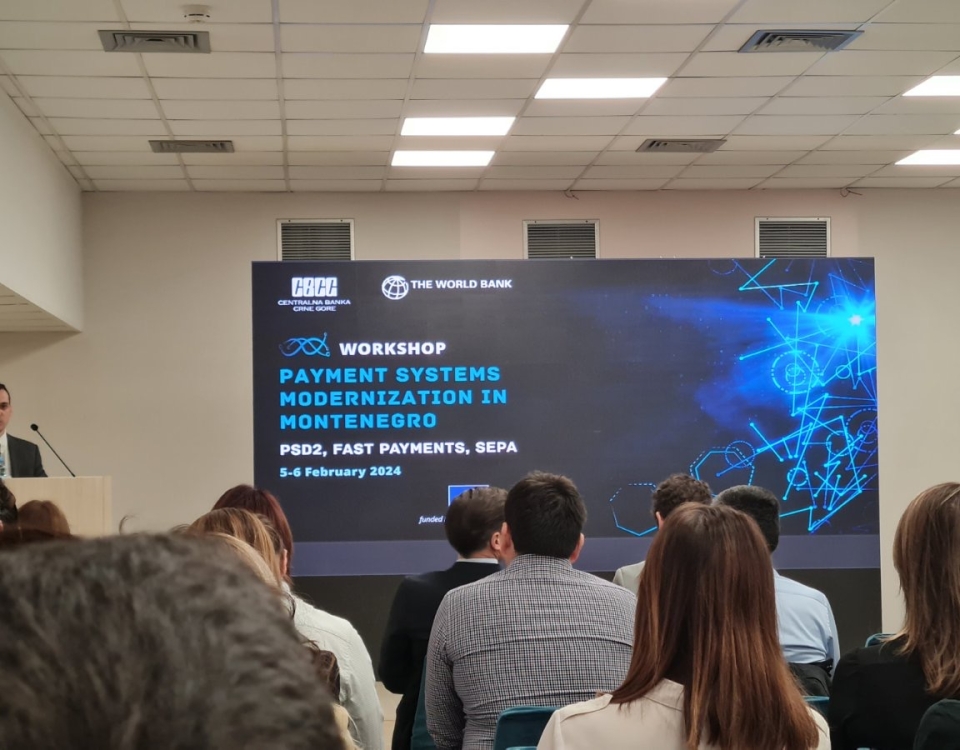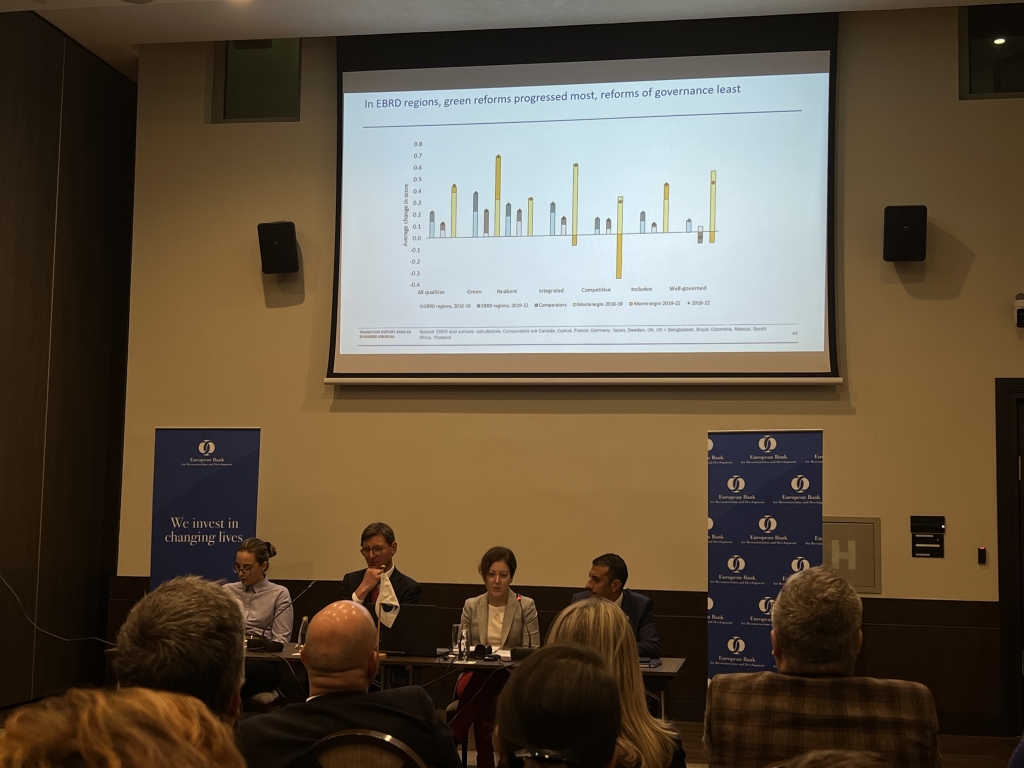
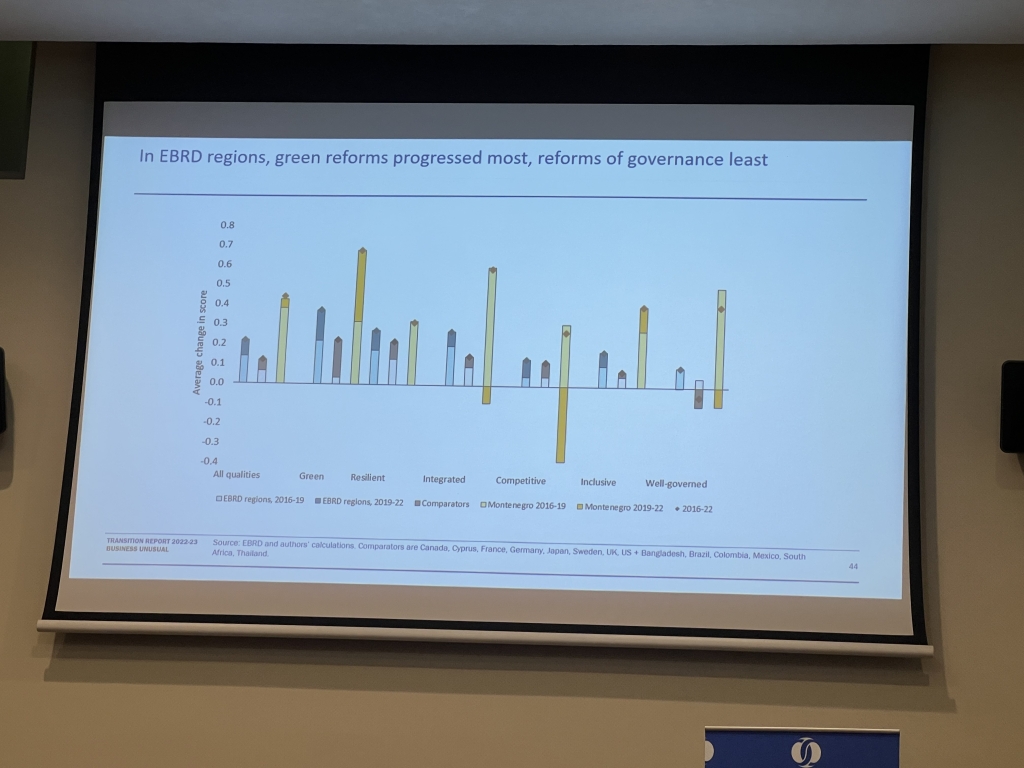
A global pandemic, supply-chain disruption, extreme weather, war in Europe, forced migration on a massive scale, rocketing gas prices, high inflation, debt burdens, reshoring, friendshoring… It is clear that there will be no going back to the pre-pandemic “business as usual”. The EBRD Transition Report 2022-23, examines the tectonic changes that the EBRD regions face and presents a wealth of analysis to inform public policy and business decision-making.
The report states that Montenegro returned the amount of GDP to the pre-pandemic level, as well as that it had the highest growth rates in the Western Balkans region. The risks for further growth are high inflation, the sensitivity of tourism to geopolitical events, as well as the spill over of the crisis in the Eurozone where, as stated, the largest economy – Germany – is facing a recession. Montenegro is making progress in most areas, as well as growing interest in the transition to a green economy, where, according to polls, it is now a priority for 56 percent of respondents, which is significantly more than in previous years.
The Law on Credit Institutions strengthens the capital requirements of banks, introduces mandatory board supervision, tightens norms for the identification and classification of non-performing loans and sets criteria for determining the systemic importance of banks, while the latter introduces the resolution fund, minimum requirements for eligible liabilities (MREL) and a bail-in tool.
Main macroeconomic indicators %
| 2018 | 2019 | 2020 | 2021 | 2022 proj. | |
| GDP growth | 5.1 | 4.1 | -15.3 | 13.0 | 3.7 |
| Inflation (average) | 2.6 | 0.4 | -0.3 | 2.4 | 12.8 |
| Government balance/GDP | -6.2 | -1.8 | -10.9 | -1.7 | -5.0 |
| Current account balance/GDP | -17.0 | -14.3 | -26.0 | -9.2 | -13.8 |
| Net FDI/GDP [neg. sign = inflows] | -6.9 | -6.2 | -11.2 | -11.7 | -11.1 |
| External debt/GDP | 163.7 | 167.4 | 221.6 | 191.5 | n.a. |
| Gross reserves/GDP | 22.3 | 27.6 | 41.5 | 35.3 | n.a. |
| Credit to private sector/GDP | 49.6 | 49.0 | 60.0 | 52.3 | n.a. |

